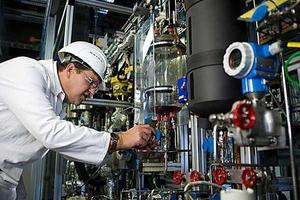Ethylene glycol is a slightly oily, odorless, viscous liquid. It is soluble in alcohols, water, acetone and turpentine. Ethylene glycol is the basis for automotive and household antifreezes, as it lowers the freezing threshold of water and aqueous solutions. An interesting fact is that even a frozen liquid does not solidify, turning into ice, but simply becomes loose. In addition, aqueous ethylene glycol solutions do not expand and therefore do not damage the tubes and radiator in the car.

This substance is very hygroscopic, that is, it absorbs water well from the environment (air, various gases). Industrial production of ethylene glycol is established at many chemical enterprises. It should be remembered that this substance is toxic, although it has a sweetish flavor. Therefore, when interacting with it, safety precautions must be observed. The vapors of this substance are not very toxic and can pose a health hazard only if inhaled for a long time. Ethylene glycol is a combustible compound. High concentrations of its vapors in the air are explosive, however, in a mixture with water, ethylene glycol loses these properties.
Application
Ethylene glycol is used in various fields of activity and industries: automotive, chemical, aviation, textile, electrical, oil and gas. One of the main areas of application of this substance is the production of coolants and antifreezes. Due to its high demand, the industrial production of ethylene glycol has gained enormous proportions. This product can be used as a solvent for paint and varnish products.
Methods for producing ethylene glycol
There are a lot of methods for obtaining this substance, but not all of them are suitable for industrial production . One of the most popular methods is to obtain ethylene glycol from ethylene by oxidizing the latter with oxygen in the presence of a silver catalyst, and then subsequent hydration. However, another technique is still in demand.
Obtaining ethylene glycol by hydrolysis of ethylene chlorohydrin. In both cases, the hydration reaction
of ethylene oxide is carried out in the presence of catalysts and at elevated temperature. There is also a method in the literature in which ethylene glycol is
produced by reacting water, formaldehyde and
carbon monoxide. The glycolic acid obtained in the first stage is subjected to esterification and ether is obtained. Then it is hydrogenated to ethylene glycol. This technique is used in the USA.
The resulting product undergoes a thorough purification, because even a small content of impurities adversely affects its properties. For example, in the presence of substances such as polyglycols and diethylene glycol in the composition of ethylene glycol, its thermal stability is significantly reduced. Therefore, in a high-quality product, the percentage of third-party connections should be minimal. This is especially true for chlorine-containing substances and aldehydes. The mass fraction of the main compound should be at least 99.5%.